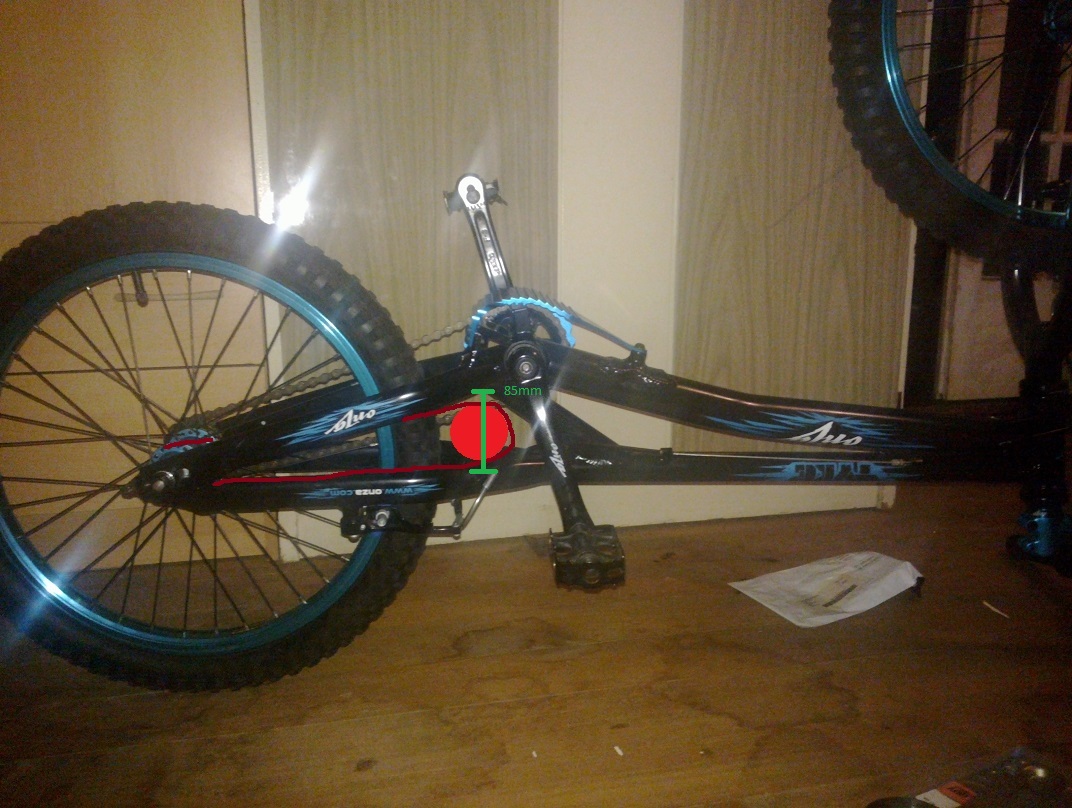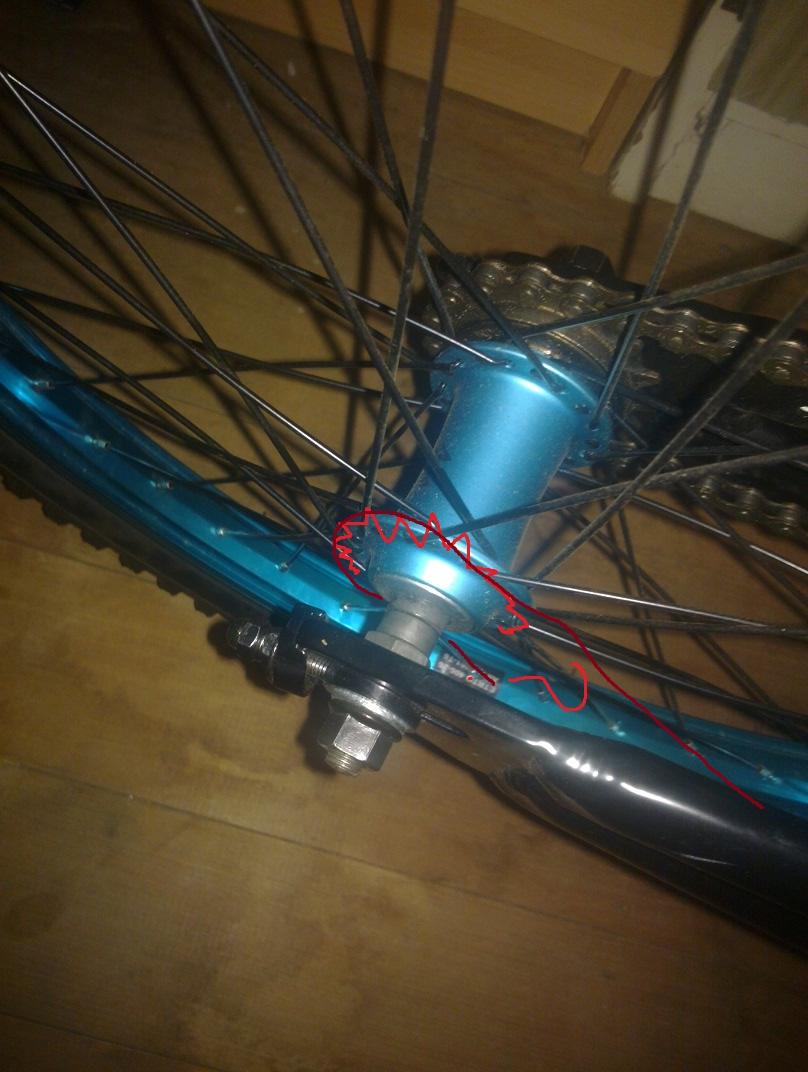Hi, been thinking about this on/off for a few years, got this bike just over a month ago.
Wanting to attach an RC motor of some sort (are 12v motors enough? With no job etcetc I'd like to avoid having to get multiple 12v packs to put in series), don't want to go the hub route.
I have 0 experience, but how hard can it be?
Here was my idea:

I've got about 85mm in height to work with, probably about the same or less in width.
With that idea, I need to figure out a way to attach a sprocket of some sort to the rear wheel,
which would also mean that the motor would be always spinning while the bike is in use (is this bad for the motor?).

(Somehow attach here. Bolt on, clamped tight? Hurt spokes?)
Battery plan for later would be to have the batteries along the top of the frame.
The reason for it all would be to help on 10km-ish (6 mile) rides, as they're not too fun on 20" wheels with my low gearing ha.
So yeah, not sure on what power I need. Mostly to make things faster on slight inclines probably (or even to just reach the estimated google maps bicycle speeds of around 10km/h lol).
I weigh 55kg, bike weighs about 10kg. Any other information I need?
Is this viable in any way?
Wanting to attach an RC motor of some sort (are 12v motors enough? With no job etcetc I'd like to avoid having to get multiple 12v packs to put in series), don't want to go the hub route.
I have 0 experience, but how hard can it be?
Here was my idea:

I've got about 85mm in height to work with, probably about the same or less in width.
With that idea, I need to figure out a way to attach a sprocket of some sort to the rear wheel,
which would also mean that the motor would be always spinning while the bike is in use (is this bad for the motor?).

(Somehow attach here. Bolt on, clamped tight? Hurt spokes?)
Battery plan for later would be to have the batteries along the top of the frame.
The reason for it all would be to help on 10km-ish (6 mile) rides, as they're not too fun on 20" wheels with my low gearing ha.
So yeah, not sure on what power I need. Mostly to make things faster on slight inclines probably (or even to just reach the estimated google maps bicycle speeds of around 10km/h lol).
I weigh 55kg, bike weighs about 10kg. Any other information I need?
Is this viable in any way?

